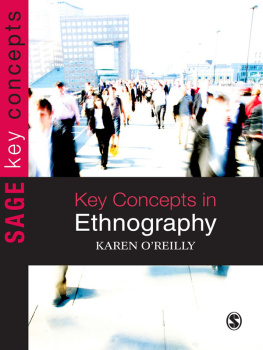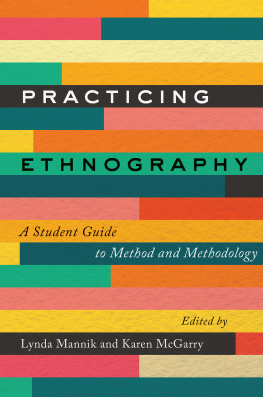First published 2020 by Bloomsbury Academic
Published 2020 by Routledge
2 Park Square, Milton Park, Abingdon, Oxon OX14 4RN
605 Third Avenue, New York, NY 10017
Routledge is an imprint of the Taylor & Francis Group, an informa business
Copyright Karen Waltorp, 2020
Karen Waltorp has asserted her right under the Copyright, Designs and Patents Act, 1988, to be identified as Author of this work.
For legal purposes the Acknowledgments on p. xiii constitute an extension of this copyright page.
Cover design: Ben Anslow
All rights reserved. No part of this book may be reprinted or reproduced or utilised in any form or by any electronic, mechanical, or other means, now known or hereafter invented, including photocopying and recording, or in any information storage or retrieval system, without permission in writing from the publishers.
Notice:
Product or corporate names may be trademarks or registered trademarks, and are used only for identification and explanation without intent to infringe.
A catalogue record for this book is available from the British Library.
A catalog record for this book is available from the Library of Congress.
ISBN13: 978-1-3501-2735-7 (hbk)
Typeset by Integra Software Services Pvt. Ltd.
Sarah Pink
In recent years I have, both individually and with others collectively, argued for and practiced a revised anthropology. Such an anthropology should account for futures not only as an object of study, but moreover as a site for exploring anew our ethics and our commitments to anthropological intervention. Instead of engaging only with what has already happened, a revised anthropology needs to focus on emergence, uncertainty, and possibility, and on the anticipatory feelings of hope, trust, and anxiety through which they are experienced. It is also an interdisciplinary anthropology, which engages visual and sensory modes of doing ethnography and that experiments beyond its boundaries to create new methods and techniques of knowing, critiquing, and intervening toward responsible and ethical futures. This might mean it sometimes cedes its conventional principles in the pursuit of encountering alternative ways of knowing to those the discipline conventionally adheres to. Finally, I believe in an anthropology that seeks to participate in processes of change, an interventional anthropology that understands how technologies and media are part of the way life is already lived out and imagines how they will be part of possible futures.
I am delighted to write the foreword to Why Muslim Women and Smartphones: Mirror Images, precisely because it is just the kind of book that a revised anthropology needs and that its scholars and students will be inspired by. Karen Waltorp gifts us a compelling example of what anthropology can be, when it takes a visual and sensory stance, once it is divested of its conventional structures and formats of writing and presentation, when it engages fully with the technological and mediated worlds that characterize everyday life, and when it moreover accounts for the different and maybe not immediately visible temporalities through which people experience events of their lives. We learn what it can mean to live in the midst of an everyday social, sensory, and affective world, entangled with the complexities of the continents, technologies, and intimacies that bind people together. And we are introduced to the anticipatory modes through which smartphones and social media are engaged as people carefully and skillfully navigate the complex environments they are implicated in.
Fieldwork
The inextricability of fieldwork and life is integral to the experience of the anthropologist, who must find a route through the ethics, friendships, and theoretical and methodological stances that guide her personal and professional commitments. More than two decades ago I found myself immersed in a life of fieldwork in Southern Spain (Pink 1997). I wove my time between the sometimes connected or contiguous world of bullfighting and a network of personal relationships and friendships, some of which have endured to the present thanks to social media. My life and research made a temporal trace, which I tracked with the help of an analogue camera, a pile of press cuttings and photocopies, and many written notes. I still cannot imagine how I could have done ethnography without photographing (and occasionally videoing), copying or saving printed images, and watching TV. That is, the materials of my fieldwork were necessarily composed of things that could not be written or always spoken. I was surrounded by, and participated in, a world that could not be separated from the media narratives of the time, as public events were made meaningful in terms of intimate possibilities and intimate relationships were understood through public narratives. My later projects have involved me researching in the intimate space of the home (Pink 2004, 2012), where I found that the recounting and reenacting of the most mundane everyday tasks of cleaning or laundry on video were capable of invoking stories of lifes memories on the ongoingness of the sensory presence of others and of the intensities and loss of death and separation. Writing from the position of the intimate worlds of others, in which one has shared, is beautiful, difficult, and complex. This is to write from a position of privilege, but not in the sense of hierarchy or a privilege that one already assumes, but from the privilege of having been allowed and trusted to write about other peoples lives. Being in such a position brings with it perhaps an obligation to acknowledge how our own lives are likewise part of the story. And to do so assumes both responsibility and vulnerability. It requires that the anthropologist becomes and allows her research to be vulnerable to her informants. As Waltorp shows, this means both inviting them to set the boundaries and simultaneously taking up her own responsibility. For the visual anthropologist this position is emphasized still further, since the personal and professional, the intimate and public, and the ethnographic and the theoretical, become connected through the processes of making, showing, sharing, and concealing videos and photographs. My own fieldwork in the 1990s, in a bullfighting world with a vibrant local and national visual culture, was often shaped around photographing, having printed, sharing, and tracing the connections made through analogue photographs. As we seek to collaboratively document the lives of others, they bring us into their images and they incorporate us through own visual practices, and as such into their visual cultures and worlds, on their terms (Pink 2013). As Waltorp shows, when such relationships are articulated in contemporary sites of which the smartphone and Internet are inextricable parts then digital images and their attendant uses and sharing across social media apps and platforms become both modes of understanding how people live, feel, experience, and imagine, and bonds between researcher and informants. These are the visual and mediated sites and fields in which in-depth ethnography now often happens; Waltorps discussion offers new researchers a pertinent insight into how the visual anthropologist might engage with and learn through such relations ethically and responsibly.









